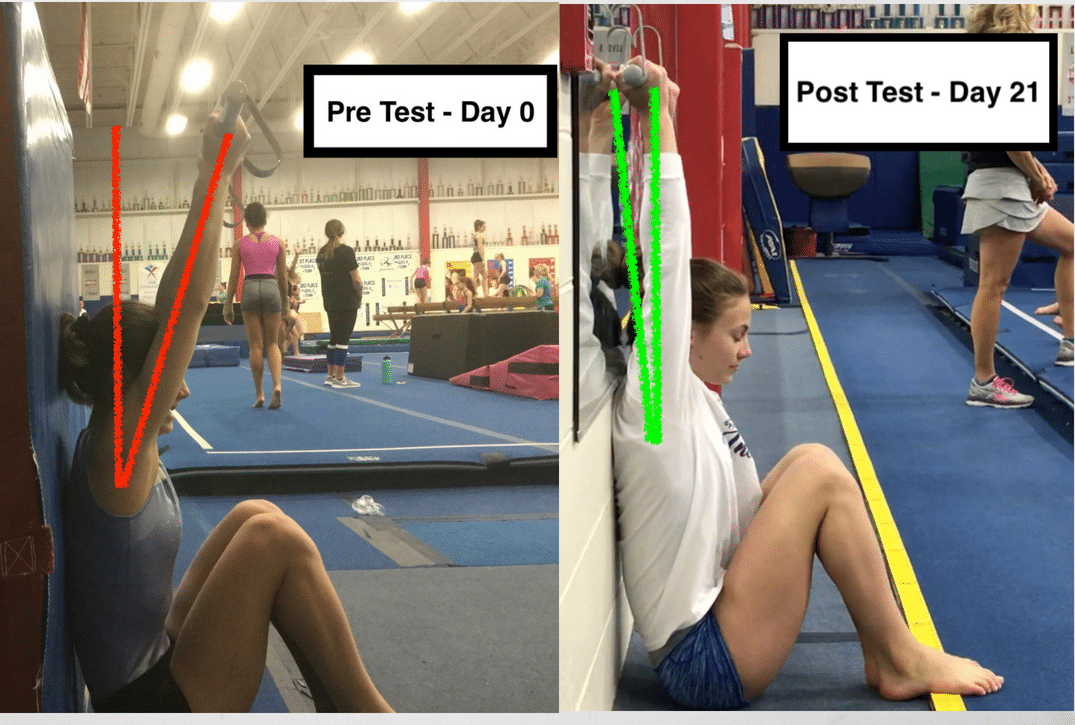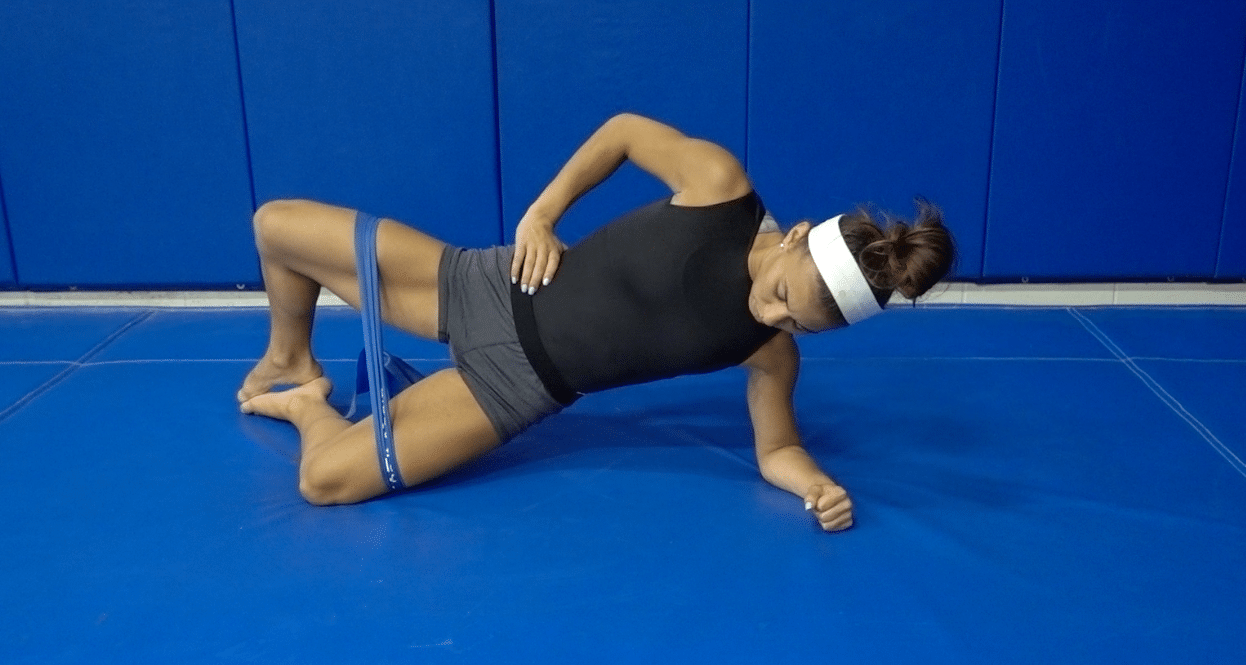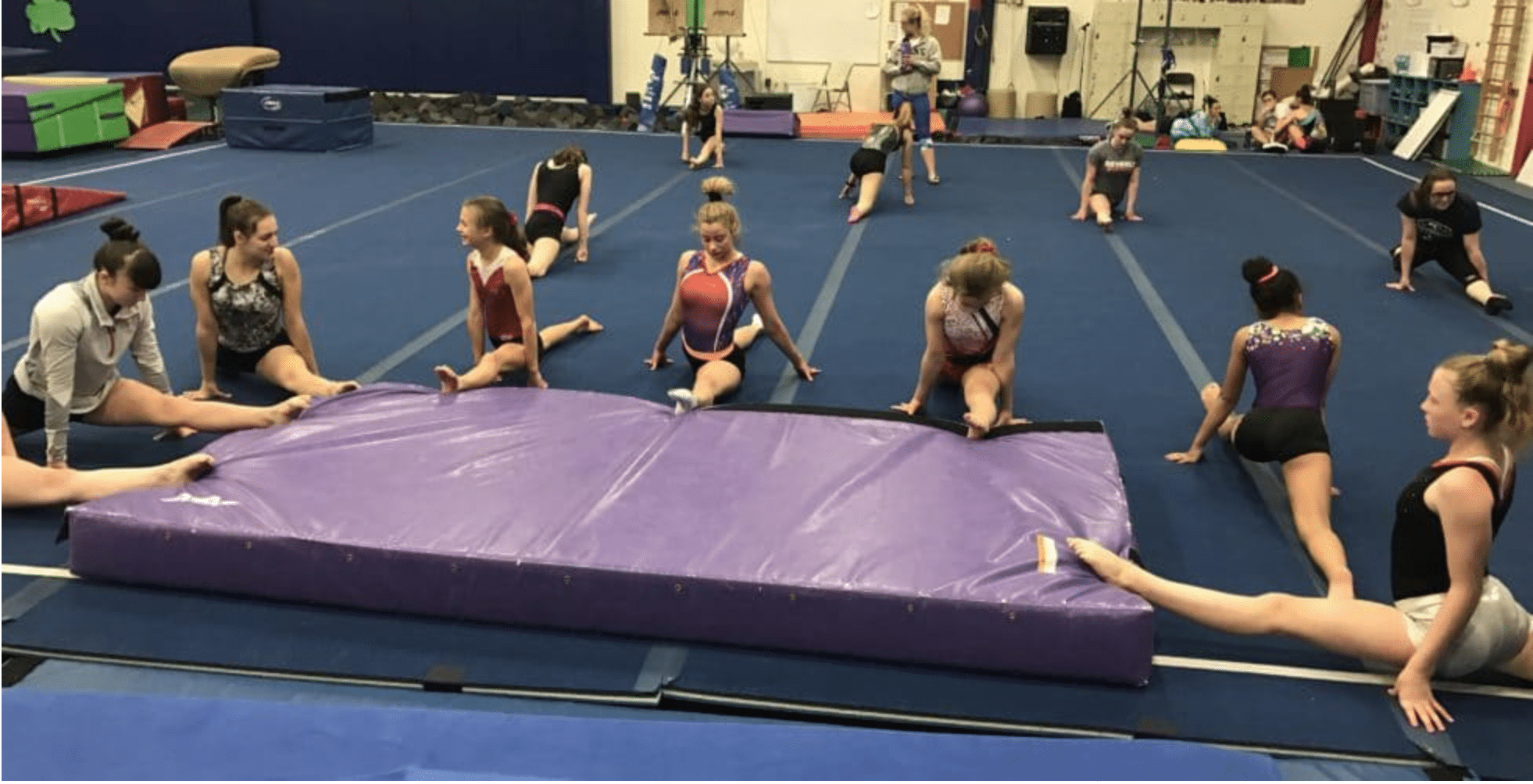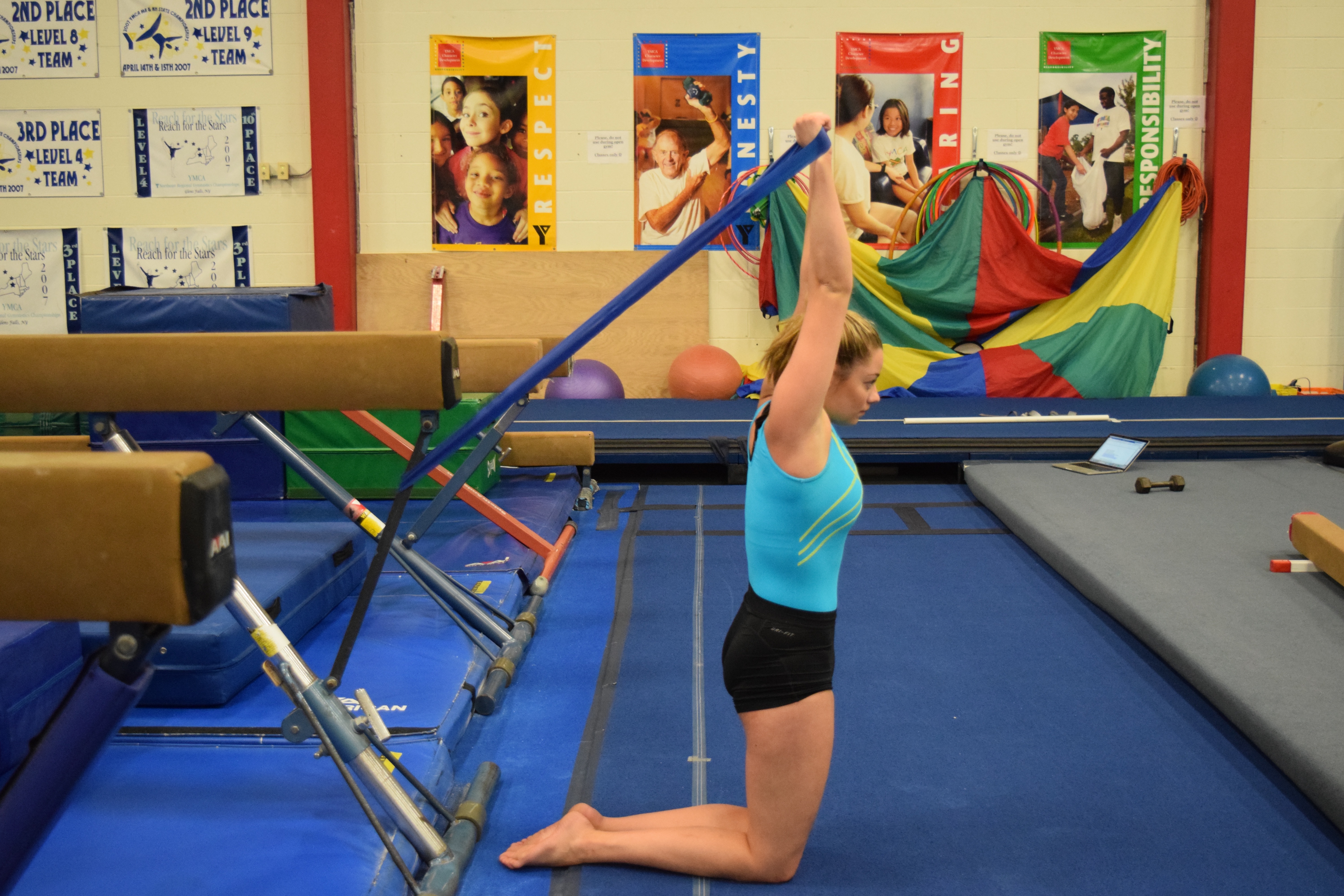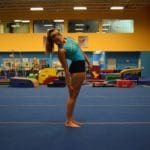3 Reasons Why Not To Stretch Toe Point In Gymnasts With A History Of Ankle Sprains
I wanted to blog quick about a scenario where it might be a good idea NOT to stretch a gymnasts ankles for a toe point. Ankles are one of the most frequently injured body parts in gymnastics with a variety of injuries from getting crunched on short landings, chronic impingement, sprains, stress fractures, and more. A “rolled ankle” or inversion sprain is definitely among the most common for gymnasts. Not only do they happen quite a bit as a first time injury for a gymnast, they seem to keep popping up as re-occuring injuries for many gymnasts leading to cumulative issues down the road. I’ve seen hundreds of them and had plenty myself during my years of gymnastics. Although I know having a fantastic toe point is something all gymnasts and coaches strive for, I personally feel that gymnasts with wobbly ankles or have a history of inversion ankle sprains shouldn’t be getting this cranked on. Here’s 3 thoughts about why.
Table of Contents
1. Possible Increases Injury/Re-Injury Rate
A rolled ankle happens when the gymnast catches their foot into a “down and in” position (plantar flexion with inversion) leading to the structures on the outside portion of the foot being damaged. This often happens when the gymnast is working one legged leaps or jumps, takes off for a skill off balance, or lands with their weight more onto one leg. Part of the reason it is so common in gymnastics is because the gymnast has to move from an extreme toe point position to a toes up landing position within an extremely small time window. If the gymnast doesn’t do it fast enough or lands awkwardly it can be problematic.
The “down” portion or plantar flexion is what makes up a toe point. Most gymnasts in general (and especially people with chronic ankle sprains) tend to hang out in this position at rest. So think about this for a second. Does it make sense to take a gymnast who go their injury in the first place by rolling her ankle “down and in” and stretch the “down” portion more? In my mind, definitely not. Gymnasts are already notorious for having really tight calves because of how much time they spend in a toe point along with doing so much jumping and landing. Not to mention their flat feet may cause those same outside ankle structures that may be inflammed/damaged to get re-irritated when impinged upon.
If the gymnast is already hanging out in a “down and in” position, they are predisposing themselves to continuously catch their over and over, leading to the re-occuring injury part mentioned above. Cranking on their ankles to get more toe point may help to make skills look better, but may be increasing their subsequent injury risk. Remember the biggest risk factor for an injury is a previous injury, and a lot of it has to do with what got the gymnast there in the first place. Considering what type of ankle work you are doing with a gymnast who has an injury history like this is important for coaches to think about.
2. Making A Hypermobile Ankle More Mobile
This is closely related to the one above, but many of the “wobbly ankles” come about because the gymnast has lots of laxity overall. This means not only for the ankle joint, but also the rest of leg chain all the way up to the hip and lower back. Some of the gymnasts could be born more lax and likely have been successful in gymnastics because of it. Gymnastics training itself may create a position where a gymnast acquired more hypermobility with jumping/lading forces but also the large emphasis on mobility. If a gymnast is already very mobile and lax, pushing further on the ankle joint my only be making it worse. Chances are the toe points stretch is further lengthening tendons, ligaments, and the ankle joint capsule. The gymnast is depending on those static stability structures because they probably have issues related to their muscles and nervous system not being able to assist with dynamic stability. Take this gymnast for example, who has super wobbly ankles and does a lot of pre-hab for in an effort to minimize her risk. Her ankles are very lax and she also tends to hang out in the “down and in” position that may predispose it to roll.
I would suggest that these very mobile of gymnasts need more work learning to control the motion they have both with basic movements and with complex movements that involve higher forces and fast reaction times. Teaching gymnastics specific stability and whole chain coordination through single leg jumping, hopping, dynamic balance drills, and so on is usually the more beneficial route. It can help to lower their injury risk for another ankle sprain, but it also can help their performance by increasing single leg and double leg landings/jumps etc.
3. Exaggerating the Imbalance
A huge issue related to local ankle problems and also up the chain issues in gymnasts is the large imbalance that develops between the “toes down” motion (plantar flexion) and “Toes up” motion (dorsiflexion). Missing ankle dorsiflexion is a huge problem because it creates local ankle issues for injury but also causes a huge ripple effect up the leg chain as other joints and structures have to compensate
A huge area that this problem impacts is proper squatting, landing, and force distribution abilities during gymnastics. I recently ran injury assessment and movement screening including the FMS on all my optional gymnasts. One of the biggest things I found was that most of their overhead deep squat performance was pretty rough all around, but almost all the limited squat patterns notable improved with a simple heel lifting (squatting with heels elevated). This really showed the girls how important the “toes up” mobility was for both performance and injury risk. More to come on the whole groups results coming soon.
In short, stretching the toe point more may be exaggerating this imbalance, leading to issues both in their injury risk for inversion sprains as noted above but also other ankle injuries. It also may impact their ability to control landings and tumble leading to decreased performance.
Summary Thoughts
Believe me I’m right there with coaches saying skills need to be clean and to aim for perfect form including a good toe point, but scenarios like this need to be considered. Along with this, some gymnasts are appropriate for getting their toe point worked on if it is limited. However, even though I know everyone want’s a perfect toe point I would respectfully disagree with people who continue to crank on a toe point stretch with gymansts that have lots of ankle problems. Unfortunately I think a slight ego (coach or gymnast) and quest to have insane flexibility leads many gymnasts down a shaky path. In my mind, going from a great toe point to a crazy toe point may not be worth the misery for the gymnast or the possible increase in injury rates.
There is a lot that goes into why someone continues to roll their ankles, including the sport itself and the demand on the ankle joints. I’m aware that a lot of this has little room to change and is part of the sport. However, I think a huge issue related to the high re-injury rate for ankle sprains is related to some choices we make about separating athlete’s based on their individual needs, rather than lumping our gymnasts all into the same training decisions. Just like two different gymnasts have two different issues on the same skill, the same thing goes for their movement and injury risk profile. This is just one piece of the puzzle.
A lot of research supports that chronic ankle sprains may be more related to altered hip and whole leg chain capabilities. First, I highly suggest that the gymnasts you have with ankle issues get evaluated by a medical professional to to make sure nothing serious is going on. Once cleared, I would spend time reading about some articles on the site related to ankles and glute exercises to help out during training as integrated pre-hab. I would offer the suggestion of taking away the aggressive toe point work, and replacing it with ankle dorsiflexion mobility, glute control, and efforts to prevent re-injury. Here are the links to other articles I mentioned above,
“6 Glute Exercises Gymnasts Need To Do Regularly”
That’s all for now, hope this was helpful. Best of luck.
Dave
References:
- Caine D., et al. The Handbook of Sports Medicine In Gymnastics. First Edition. John Wiley and Sons, 2013
- Clanton, T.O. Return to Play in Athletes Following Ankle Injuries. Sports Health: A Multidisciplinary Approach. October 2012; 4 (6): 471 – 474
- Irwin G., Gittoes MJR. Biomechanical approaches to understanding the potentially injurious demands of gymnastic-style impact landings. Sports Medicine, Arthroscopy, Rehabilitation, Therapy & Technology. 2012 4(4)
- de Vries JS., Krips R., Blankevoort L., van Dijk CN. Interventions For Treating Chronic Ankle Instability: A Systematic Review. The Cochrane Library; 2011 (8)
- Oscar E. Corrective Exercise Solutions to Common Hip and Shoulder Dysfunction. Lotus Publishing: California; 2012



